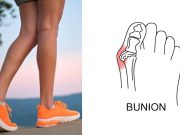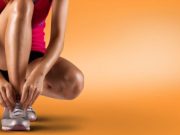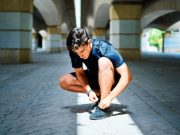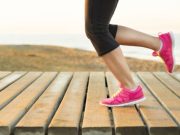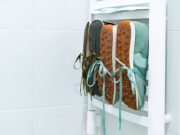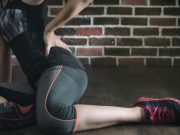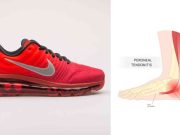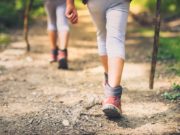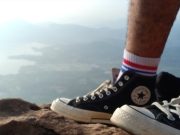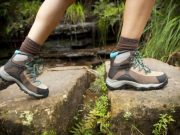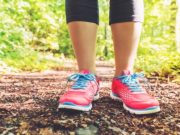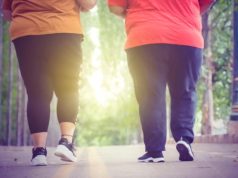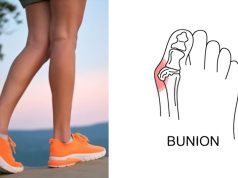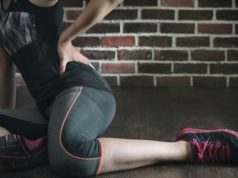No one likes the sound of squeaky shoes; it’s embarrassing, annoying, and can even be disruptive to others. Whether you’re walking down a hallway at school, strolling the park on a Sunday afternoon, or running an errand around town, nobody wants to be accompanied by that annoying noise. But how do you stop your shoes from making such a racket when you move? Thankfully, there are several methods for reducing or eliminating noise. In this article, we’ll cover five ways to silence your shoes when you walk and provide helpful advice for keeping them quiet in the future.
Table of Contents
What Causes The Squeak?
Squeaky shoes are an annoying problem for many people, especially runners. Squeaks can occur in any type of shoe, including running shoes. The leading cause of the squeak is friction between two surfaces. Generally, this is caused by the sole of the shoe sliding against the upper part when you walk. This movement causes a vibration that results in the squeak you hear. Identifying and addressing the source of your shoe’s squeak is essential to stop it from happening.
01: Conditioner On The Upper
When you hear that squeak of your shoes when you walk, chances are it is coming from the upper part of your running shoes. The upper part comprises several materials, such as leather and synthetic fabrics, both of which can become dry and stiff over time. To prevent squeaking noises, properly conditioning the upper part is essential.
One way to do this is to purchase a shoe conditioner specifically for running shoes. This should be applied according to the instructions on the product label and left to soak overnight. Doing this regularly will ensure that the upper remains supple and flexible enough to avoid annoying squeaking sounds when walking or running.
In addition, applying a thick layer of powder around the inner sole and orthotic can also help reduce squeaking. When applied correctly, this will act as an additional buffer between the shoe’s upper and outsole, helping keep them from rubbing against each other and creating friction-related noise. Make sure to follow any guidelines provided by the powder manufacturer to get optimal results.
Be sure to let your wet shoes completely dry before wearing them again; moisture can cause increased friction between the outsole and upper parts of the shoe, resulting in extra noise when walking or even standing still. If necessary, using a hairdryer set on low heat can speed up the drying process without damaging your shoes’ materials. Alternatively, you can use a tumble dryer with a relaxed air setting if available; however, it may be best to check with your manufacturer before attempting this technique, as some materials may not react well in a tumble dryer environment.
By taking these steps and regularly conditioning your running shoes’ uppers, you should be able to keep those embarrassing squeaking noises at bay!
02: Powder Under the InnerSole or Orthotic
If your shoes make noise as you walk, one way to stop the squeaking is by adding powder under the innersole or orthotic. This can reduce the friction between the sole of your shoe and the insole and absorb moisture that might be causing the noise. When choosing a powder, opt for one specifically designed for running shoes. The powder should be applied directly onto the insole or orthotic, and if it is a large area, use a cotton ball or brush to spread it out evenly. Cover every part of the insole so that all areas get an even coating. Once you have applied the powder, allow it to dry before putting on your shoes. This will ensure that it stays in place and works properly.
03: Dry Your Shoes
Running shoes are likely to squeak or make noise when you walk if they are not adequately cared for. To prevent your running shoes from making noise, make sure that you dry them out after each use. This can be done by removing the inner sole and setting it aside, then letting the shoe air dry in a well-ventilated area. Ensure to keep the shoes away from direct sunlight or heat sources, as this could damage the material and cause them to squeak even more when worn.
After it completely dries, apply a leather conditioner or waterproofer to the upper of your shoe. This will help keep them supple while protecting against water damage that may lead to squeaking noises when you walk. Consider applying a suede or other specialty protector, as these often contain additional ingredients that will add an extra layer of durability to your running shoes.
Finally, once you’ve taken all the steps above, add a bit of powder under your shoe’s inner sole or orthotic for added cushioning and sound absorption. This added step will help reduce friction between your foot and the shoe, which can often be the culprit behind noisy running shoes. With all these steps taken together, you should be able to enjoy your runs without worrying about unwanted squeaking noises coming from your feet!
04: Wear Your Shoes In
The squeaking sound from the sole can be bothersome and even embarrassing if you’re in a public place. To avoid this problem, it is essential to “wear your shoes in” before heading out for a run or walk.
Wearing your running shoes helps to reduce the risk of squeaks by breaking down the materials used on the shoe and allowing them to fit together snugly. Start by wearing your new running shoes around the house for a few days before taking them outside. This will help soften up the material and allow it to mold more quickly to your foot shape. You should also wear different types of socks with your new shoes – thick ones for cold weather and thin ones for warm weather – as this can affect how quickly the material breaks in.
When you first take your new running shoes outside, take short walks or jogs at a slow pace so that you can feel how they fit against your feet. Try different activities, such as walking up hills or stairs, as well as running on flat surfaces, so that you can test out all aspects of how your shoe fits and feels against your feet. Once these activities become comfortable, you’ll know that your running shoes are worn enough to go on longer runs without worrying about any annoying squeaks!
05: The Tumble Dryer Strategy
If you’re looking for a way to stop running shoes from making noise when you walk, the tumble dryer strategy might be the right solution. It’s a simple method that can help reduce or eliminate squeaking noises, allowing you to move around in peace.
To use this strategy, place your running shoes in a small pillowcase, seal them up, and run them through the tumble cycle setting on your dryer. The heat and motion will help break down the fibers of the material and loosen any stuck-on particles that are causing the squeaking noise.
When using this method, make sure that your shoes are 100% dry before putting them in the dryer, as the wet fabric does not hold up well during tumbling cycles. Also, avoid adding any other items, such as clothes or blankets, into your pillowcase, as they could damage your running shoes or cause extra noise during tumbling. Lastly, check on your shoes periodically so they don’t overheat while in the dryer.
This method is a great way to reduce squeaking noises in running shoes without having to take them apart or use special lubricants and conditioners. Give it a shot and see if it works for you!
Read More :
01: What to look for in running shoes?
02: What to do with old running shoes?
03: What is a neutral running shoe?
04: What is a drop in running shoes?
05: What is a Stability Running shoe?
06: How long do running shoes last?
Conclusion
In conclusion, the squeaking of running shoes is a common problem that can be easily avoided by applying a conditioner to the upper material, powdering the insole or orthotic, drying your shoes properly, and wearing them gradually; you can break in your shoes and reduce the noise when you walk. Additionally, if all else fails, using a tumble dryer on low heat with a few tennis balls can help reduce the annoying squeak. With these strategies in hand, you’ll be able to walk in silence and confidence, knowing that your squeaky shoes are no longer an issue.





